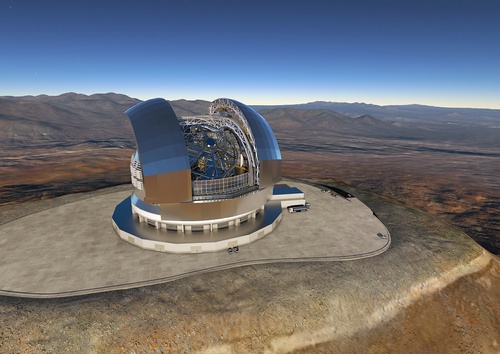A new paper believes detection of atmospheric signatures for a few potentially habitable planets could occur before 2030.
Does that mean life on other planets?
Perhaps. perhaps not. We could be first in the universe, even though mathematically we should not be, just like mathematically light from infinite stars could make our sky pure white even at night. But if we are not first, the challenge becomes how to really detect anything else. We are currently unable to visit exoplanets, and since we determined 15 years ago we couldn't even return to the moon until 2020 (and then the succeeding president scrapped that mission) we are not visiting them any time soon. But we can use telescopes to remotely examine them for so-called biosignatures.

In the works: the Extremely Large Telescope (ELT) with a mirror diameter of 39 meters. Credit: ESO/L. Calçada/Ace Consortium
But to even do that, the space community needs committee meetings. And then review papers of other papers about how to detect biosignatures. The astrophysicists behind a new review believe that the James Webb Space Telescope (which will be perhaps be launched 2020, though it has been two years away for the last 10 years) and 30 meter-class ground-based telescopes (in the early 2020s) will enable systematic chemical investigations of potentially habitable planets around cooler stars.
But we are not around a cooler star, and for stars like ours will require a designated spacecraft mission for direct imaging, with one early possibility being WFIRST (Wide Field Infrared Survey Telescope) which should be launched by 2023. If everything goes perfectly, the detection of atmospheric signatures of a few potentially habitable planets may possibly come before 2030.


